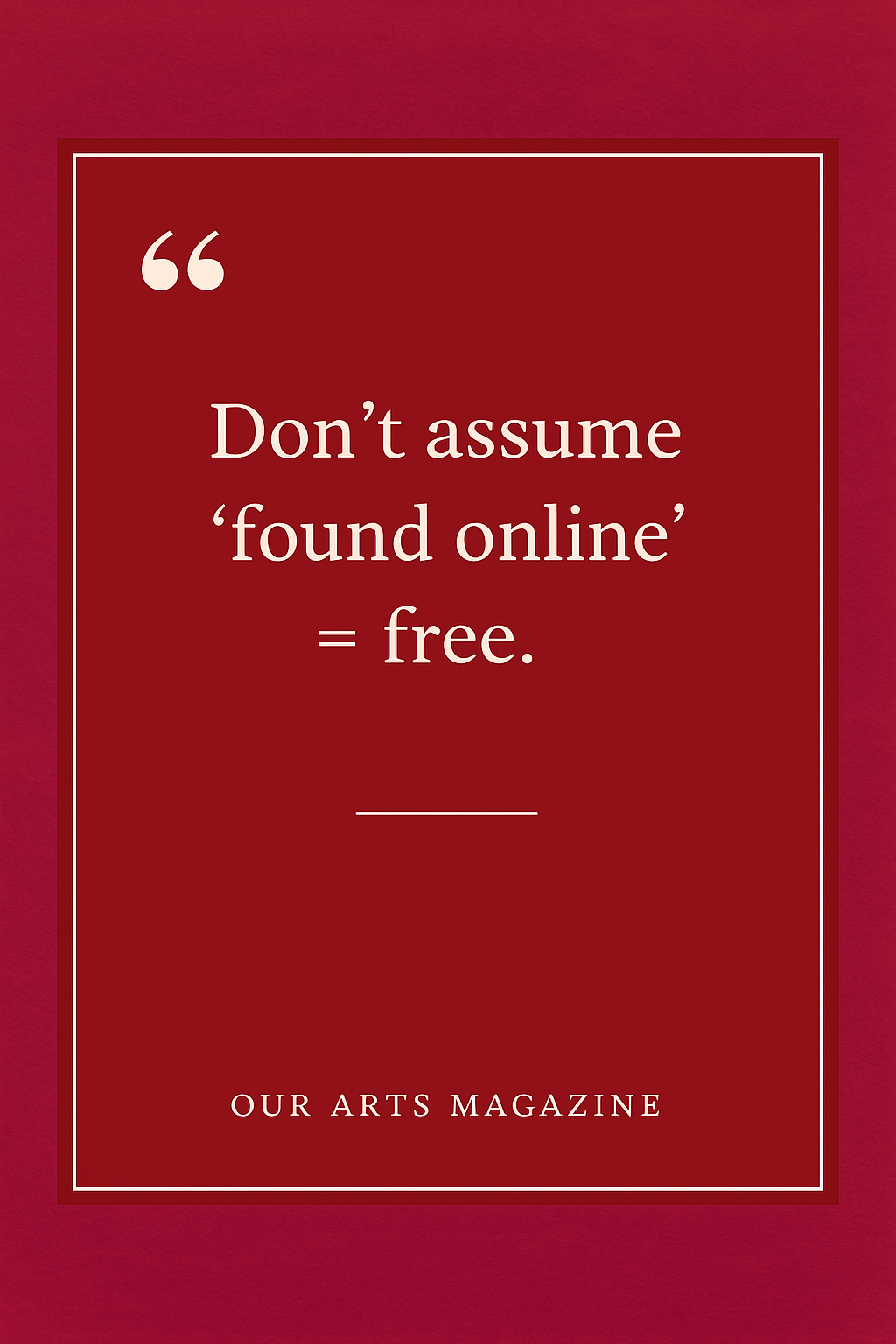What Is an Image Licence?
An image licence is simply permission to use a work in a certain way. It defines:
- Who can use the image
- How it can be used (personal, commercial, editorial, etc.)
- Where it can be used (online, in print, on merchandise, etc.)
- For how long (a one-off use, a limited time, or indefinitely)
In short: a licence is the set of rules that travels with an image.
Common Types of Image Licences
1. Copyright (All Rights Reserved)
This is the default status when you create an image. Nobody else can use it without your explicit permission.
Ideal for artists who want complete control over their work.
2. Royalty-Free (RF)
Despite the name, it doesn’t mean “free”. The buyer pays once and can use the image multiple times under set conditions.
Usually forbids reselling or claiming the image as their own.
3. Rights-Managed (RM)
Usage is specific and limited. For example: a company licences an image for one advert, for six months, in one country.
Rights-managed licences can be more valuable as they may offer exclusivity.
4. Creative Commons (CC)
A flexible system with clear labels. Some common ones include:
- CC BY – use allowed with credit to creator
- CC BY-SA – same as above, but new works must carry the same licence
- CC BY-NC – non-commercial use only
- CC0 (Public Domain Dedication) – creator waives rights; anyone may use freely
5. Public Domain
Works where copyright has expired, or rights have been waived. Anyone may use them freely.
⚠️ Always double-check: “publicly available” does not mean “public domain”.
Key Points Creatives Should Remember
- Always read the fine print – two “royalty-free” sites may offer very different conditions.
- Credit where due – even if not legally required, it’s courteous and builds community trust.
- Personal vs. commercial – posting on a blog may be fine, but using the same image on products for sale may not be.
- Protect your own work – decide which licence to attach to your creations so others know what’s allowed.
- Don’t assume “found online” = free – if you didn’t create it, it belongs to someone.
Why This Matters
For creatives, image licences are both a shield and a sword:
- A shield, protecting your work from misuse.
- A sword, allowing you to enforce or monetise your rights.
Understanding licensing also means you can confidently use stock images, references, or collaborations without fear of infringement.
The Golden Rule
✅ If in doubt, ask permission or use reputable sources.
